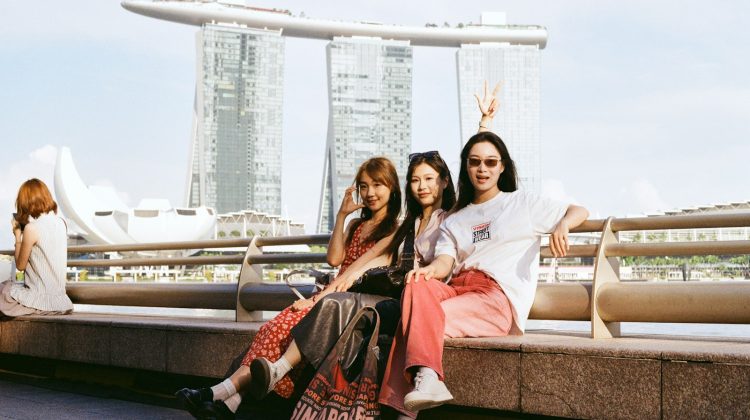
Layers of Style: Mastering Transitional Season Outfits with Intent and Ease
Between the heat of summer and the frost of winter lies a brief but essential moment in the style calendar: the transitional season. Whether it’s early autumn or the first hints of spring, these in-between months bring unpredictable weather and a unique set of sartorial challenges. One minute you’re enjoying sunshine, and the next you’re caught in a chilly breeze. It’s not quite warm enough to abandon outerwear, yet not cold enough to fully commit to heavy knits. Enter the art of layering—a fashion strategy that’s equal parts functional and expressive.
Layering is far more than stacking clothes for warmth. Done right, it balances comfort with style, function with personality. It allows for versatility throughout the day, encourages creativity with combinations, and turns basic pieces into curated outfits. Mastering the art of layering during transitional seasons means navigating unpredictable climates without compromising your look or comfort.
This essay explores how thoughtful layering can elevate your style, from fabric choices to proportions, and offers practical tips to master transitional dressing like a pro.
Why Layering Matters in Transitional Seasons
The value of layering lies in its adaptability. Transitional weather is famously inconsistent—a warm afternoon can follow a frosty morning, and a sudden downpour might interrupt an otherwise mild day. Layering provides a modular approach to dressing, allowing you to remove or add pieces depending on temperature shifts.
Beyond practicality, layering also enriches your wardrobe. It lets you combine seasonal favorites from summer and winter, extending their wear and avoiding the need for a total closet overhaul. Your lightweight sundress? It pairs perfectly with a turtleneck and boots. That oversized sweater? Just the right partner for a linen button-down and cropped jeans.
Ultimately, layering is about intelligent fashion—dressing with awareness of both the environment and your personal aesthetic.
The Building Blocks of Great Layers
To layer well, you need to start with the right pieces. Not every item in your wardrobe plays nicely in a layered look. The best layering staples are breathable, versatile, and thoughtfully chosen for their ability to work in combination with others.
- The Base Layer: Lightweight and Breathable
The base layer sits closest to your skin, so it should be soft, light, and comfortable. Think classic t-shirts, fitted turtlenecks, or long-sleeve cotton tops. Neutrals work well here, as they provide a foundation that can support bolder outer pieces.
Materials like cotton, modal, or bamboo jersey are ideal—they’re breathable and serve as excellent buffers for heavier items layered above.
- The Mid Layer: Adding Texture and Warmth
This is where you introduce texture and dimension—cardigans, denim shirts, thin knits, or lightweight sweaters. The mid layer acts as insulation and adds visual interest to your look.
This is also a chance to experiment with silhouettes: a cropped sweater over a long shirt, or a belted cardigan over a dress. The goal is to create depth without bulk.
- The Outer Layer: Protection and Structure
Your final layer needs to guard against the elements while completing your outfit’s overall aesthetic. Trench coats, leather jackets, oversized blazers, and utility vests are all excellent choices depending on the season and occasion.
Look for outerwear that is both stylish and functional—ideally something that can be easily removed and still leave a visually appealing outfit underneath.
Fabric: The Unsung Hero of Layering
Fabric choice plays a pivotal role in layering, especially when temperature swings are part of your day. Not all materials breathe the same, and mixing the wrong ones can make your outfit feel stuffy or stiff.
Natural Fibers: Cotton, wool, silk, and linen are excellent for breathability and comfort.
Technical Fabrics: Merino wool, for example, regulates body temperature and is perfect for layering in unpredictable climates.
Avoid Bulk: Stay away from heavy, overly thick fabrics as mid-layers—they can restrict movement and overheat quickly.
Mixing different textures—like pairing a soft knit with sleek leather or raw denim with flowy silk—also creates a more dynamic, curated look.
Proportions and Balance: Layering Without the Bulk
One of the most intimidating aspects of layering is the fear of looking bulky or shapeless. The key to success is understanding proportion and maintaining balance.
Play with Lengths: A long shirt under a cropped sweater, or a tunic beneath a structured blazer, elongates the body and creates interest.
Cinch When Needed: Add a belt over a cardigan or coat to define your waist and prevent the look from becoming overwhelming.
Taper Your Bottom Half: If you’re layering heavily on top, opt for slim or straight-leg trousers or jeans below to balance the silhouette.
Visual balance ensures your outfit feels put-together rather than piled on. It’s less about how many layers you wear and more about how they relate to one another.
Transitional Season Must-Haves
If you want to build a layering-friendly wardrobe for the in-between seasons, consider investing in the following essentials:
Lightweight Turtlenecks: Great under dresses, blazers, and even jumpsuits.
Oversized Blazers: Chic and polished, they work over anything from hoodies to t-shirts.
Trench Coats: A timeless outer layer that works with both casual and formal outfits.
Shackets (Shirt-Jackets): A great middle layer that doubles as outerwear on milder days.
Silk Camisoles and Tanks: These work as base layers that add a touch of elegance when visible.
Midi Dresses: Wear alone or layer over a shirt, tights, and boots for a cozy ensemble.
These pieces aren’t trend-driven—they’re functional staples that invite creativity and longevity.
Styling Ideas: Where Creativity Meets Utility
Layering is as much about personal expression as it is about staying warm. Here are a few style formulas to inspire your transitional outfits:
Urban Casual: White tee + denim shirt + black blazer + straight-leg jeans + ankle boots.
Weekend Relaxed: Lightweight sweater + sleeveless vest + joggers + sneakers.
Office Ready: Turtleneck + sleeveless shift dress + trench coat + loafers.
Boho Autumn: Floral midi dress + oversized cardigan + belt at waist + knee-high boots.
Monochrome Magic: Multiple pieces in varying shades of the same color (cream, beige, or charcoal) to create depth without clashing.
By thinking of each outfit as a visual composition, layering becomes an art form—one where practicality and style intersect.
Layering and Sustainability: A Win-Win
A thoughtful layering approach isn’t just good for your wardrobe—it’s good for the planet. Instead of buying new clothes every season, layering lets you use what you already own in new ways. A summer slip dress gets a second life over a sweater; a winter cardigan becomes fall’s go-to outerwear.
Investing in versatile, high-quality pieces also reduces waste and encourages more mindful consumption. When you layer with intention, you reduce the need for fast fashion and foster a more sustainable relationship with your closet.








